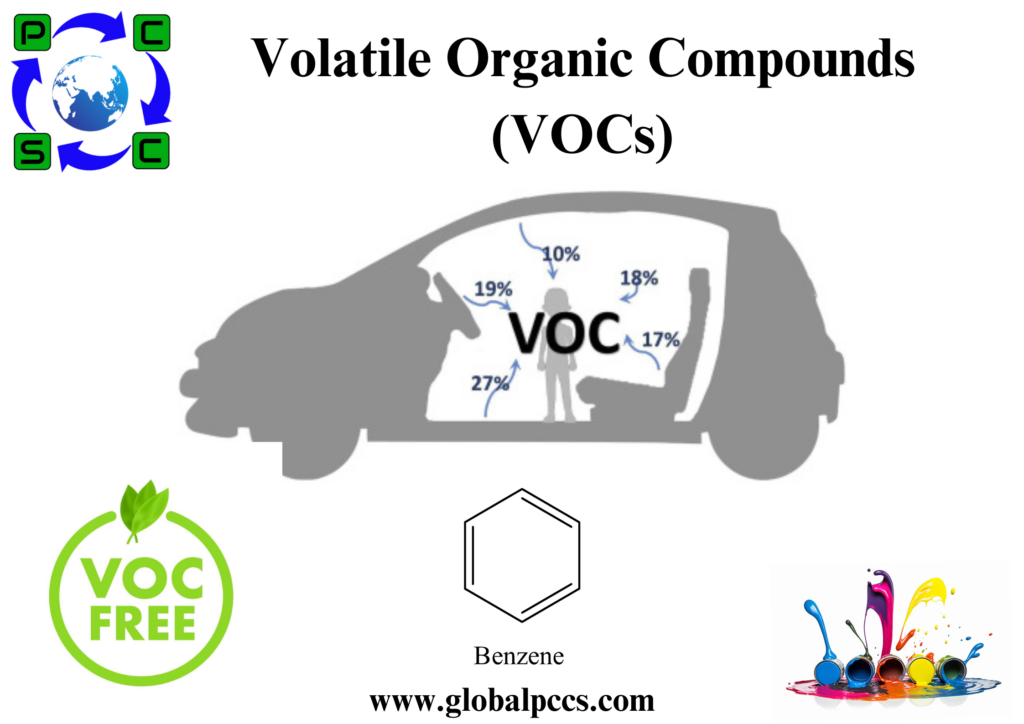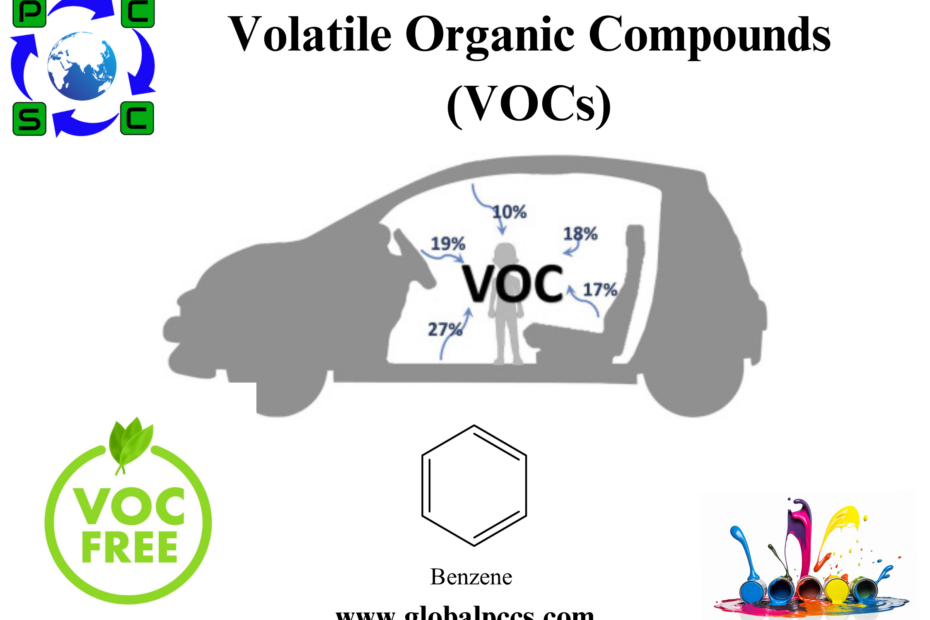 Chemicals that are organic and have a high vapour pressure at room temperature are known as volatile organic compounds, or VOCs. Accordingly, they evaporate quickly into the atmosphere. Paints, solvents, cleaning supplies, and air fresheners are just a few of the many goods that contain volatile organic compounds… In addition, office supplies, furnishings, and building materials emit them.
Chemicals that are organic and have a high vapour pressure at room temperature are known as volatile organic compounds, or VOCs. Accordingly, they evaporate quickly into the atmosphere. Paints, solvents, cleaning supplies, and air fresheners are just a few of the many goods that contain volatile organic compounds… In addition, office supplies, furnishings, and building materials emit them.
Various VOCs can lead to a range of health issues and are hazardous to human health, such as irritated eyes, nose, and throat, nausea and headaches, weariness and dizziness, harm to the central nervous system, kidneys, and liver Cancer.
Additionally, VOCs can contribute to the creation of ozone and smog, both of which can aggravate respiratory conditions by irritating the lungs.
Also, automobiles have volatile organic compounds (VOCs), which are mostly located in a variety of materials used within the vehicle, including Plastics – seats, door panels, dashboards headrests,Adhesives, Leather.This characteristic leads to significant amounts of molecules being released into the air, contributing to air pollution and posing potential health risks. VOCs are emitted from a variety of sources, both natural and anthropogenic, and are prevalent in both indoor and outdoor environments.
Sources of VOCs
Natural Sources
- Plants: Many plants release VOCs as part of their normal metabolic processes. Examples include isoprene and monoterpenes.
- Microbial Activity: Soil microbes produce VOCs during the decomposition of organic matter.
- Wildfires: The burning of organic material in wildfires releases a variety of VOCs into the atmosphere.
Anthropogenic Sources
- Industrial Processes: Manufacturing processes, particularly those involving solvents, paints, and adhesives, are significant sources of VOC emissions.
- Combustion Engines: Motor vehicles and other engines that burn fossil fuels emit VOCs through exhaust gases.
- Household Products: Many everyday products, including cleaning agents, air fresheners, and personal care products, release VOCs.
- Building Materials: New construction materials such as plywood, particleboard, and certain types of flooring can emit VOCs over time.
Types of VOCs
Some common VOCs include:
- Formaldehyde: Often found in building materials and household products.
- Benzene: Present in tobacco smoke, emissions from motor vehicles, and industrial processes.
- Toluene: Used in paint thinners, adhesives, and nail polish.
- Xylene: Found in varnishes, paints, and gasoline.
Health and Environmental Impacts
Health Impacts
Exposure to VOCs can have various short-term and long-term health effects, depending on the specific compound and the level of exposure. Short-term exposure to high levels of VOCs can cause symptoms such as:
- Eye, nose, and throat irritation
- Headaches
- Dizziness
- Nausea
Long-term exposure to certain VOCs has been linked to more severe health effects, including:
- Liver and kidney damage
- Central nervous system damage
- Cancer
Environmental Impacts
VOCs play a significant role in atmospheric chemistry. They contribute to the formation of ground-level ozone and secondary organic aerosols, both of which are key components of smog. This can lead to poor air quality and associated respiratory issues in humans and animals.
Regulation and Control
Efforts to manage VOC emissions include:
- Regulations: Governments worldwide have established regulations to limit VOC emissions. For instance, the U.S. Environmental Protection Agency (EPA) sets standards for VOC emissions from various sources.
- Product Reformulation: Industries are developing low-VOC or zero-VOC products to reduce emissions. Examples include low-VOC paints and cleaning products.
- Improved Ventilation: Ensuring adequate ventilation in indoor spaces can help reduce the concentration of VOCs.
- Air Purification: Technologies such as activated carbon filters and photocatalytic oxidation can help remove VOCs from indoor air.
VOC effect on environment
Volatile Organic Compounds (VOCs) have various effects on the environment, contributing to both air pollution and potential long-term environmental issues.
Air Quality and Smog Formation:
VOCs are precursors to the formation of ground-level ozone, a major component of smog. Ozone is harmful to human health and can cause respiratory problems. Along with nitrogen oxides (NOx), react in the presence of sunlight to form ground-level ozone. This process is more common in urban areas with high levels of vehicle and industrial emissions.
Contribution to Greenhouse Gas Emissions:
Some VOCs, such as methane, are potent greenhouse gases. While not all VOCs contribute significantly to climate change, certain ones can have a substantial impact on the greenhouse effect and global warming.
Ecological Impact:
VOCs can deposit into soil and water through atmospheric deposition. This may have detrimental effects on ecosystems, including potential harm to plants, aquatic life, and soil microorganisms.Some VOCs are persistent and can accumulate in the environment, leading to long-term impacts on ecosystems.
Controlling Volatile Organic Compounds (VOCs) is essential to minimise their impact on air quality, human health, and the environment.
Follow Regulations and Standards,Vehicle Emission Controls,Alternative Fuels,VOC-Free Products,Improved Industrial Practices, Proper Storage and Handling of chemicals,Planting Vegetation,Education and Awareness,Research and Innovation and others
Conclusion
Volatile Organic Compounds are ubiquitous in both natural and human-made environments. While they play essential roles in various natural processes and industrial applications, their emissions pose significant health and environmental challenges. Addressing these challenges requires a combination of regulatory measures, technological innovation, and public awareness to minimize exposure and protect both human health and the environment.








 Authorised IMDS & CDX Training & Consulting partner for
Authorised IMDS & CDX Training & Consulting partner for





